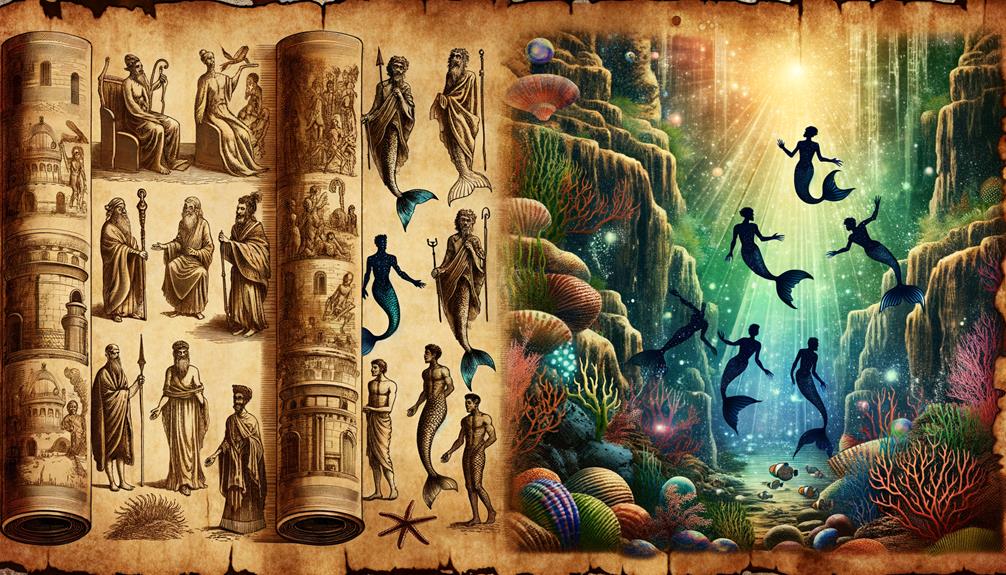Mermaids have always held a certain charm for me. You know, those mythical creatures with human upper bodies and fish tails that have intrigued us for many, many years. The earliest known tales of mermaids are traced back to ancient Syria, with the goddess Atargatis around 1000 B.C. They've been depicted in various ways throughout history, from the haunting sea spirits often confused with Sirens in Greek mythology to the shy young women in Hans Christian Andersen's tales. Mermaids symbolize our complex and shifting relationship with the ocean. Their forms and meanings vary across cultures and time periods, yet they all capture the ocean's enchanting yet perilous nature. The rich and diverse legends of mermaids offer a deep dive into a world filled with marine mysteries waiting to be solved.
Defining Mermaids
If you're into mythological tales, you've probably heard of mermaids. These mythical beings are often seen as a mix of human and sea life, with a top half that resembles a human and a tail that's more fish-like. They're most often represented as girls or young women who hail from the depths of the sea. In stories from ancient Greece, mermaids were often described as gorgeous sirens who used their melodic voices and music to charm sailors. Many tales even go as far as to place these mythical beings in royal roles, such as a mermaid princess or queen, just like the popular character of the Little Mermaid. As water spirits, they're seen as magical creatures, a belief that is shared by many cultures around the world. But, it's not all sweetness and light when it comes to mermaids. They can also be seen as dangerous, seductive creatures – a combination that keeps us intrigued.
Historical Evolution of Mermaids
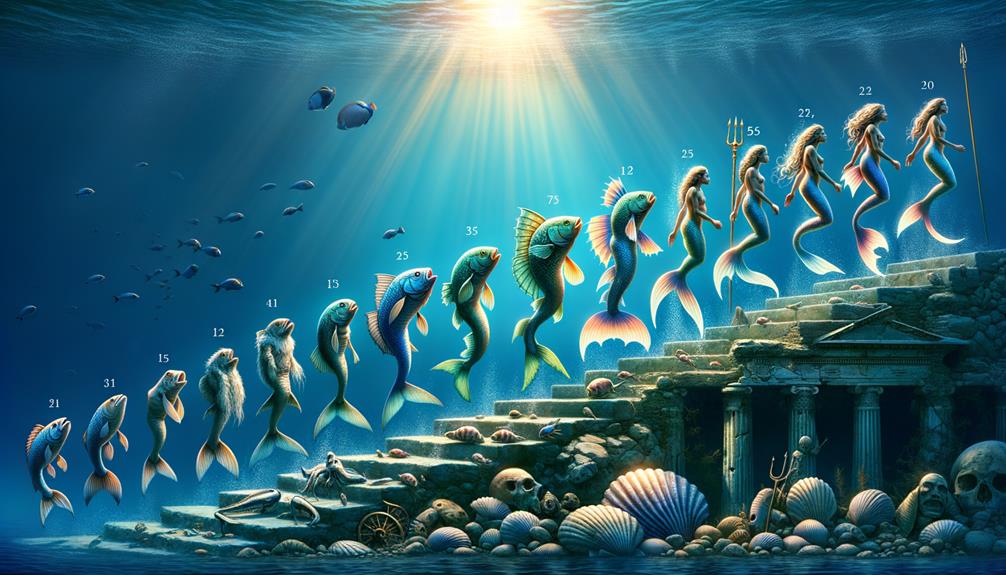
It's such a treat to see how the tales of mermaids have changed and adapted over time. They've been part of our storytelling tradition, from their early roots in Syria around 1000 BC, to the various versions we hear in different cultures today.
- If we go back to Ancient Greece, mermaids were often mixed up with Sirens from Greek myths. These creatures were notorious for using their enchanting songs to trick sailors into deadly situations.
- Jumping ahead to 1492, we've got Christopher Columbus claiming to have seen mermaids. This gave a boost to their popularity in stories and legends.
- Then in the 19th Century, 'The Little Mermaid' by Hans Christian Andersen came along. He portrayed mermaids in a new light – as sympathetic, tragic figures. This storytelling shift significantly influenced how we think about these mythical creatures.
These varying interpretations show how mermaids have transformed in our collective imagination. It's a testament to their lasting allure and mystery that they continue to captivate us.
Mermaids in Different Cultures
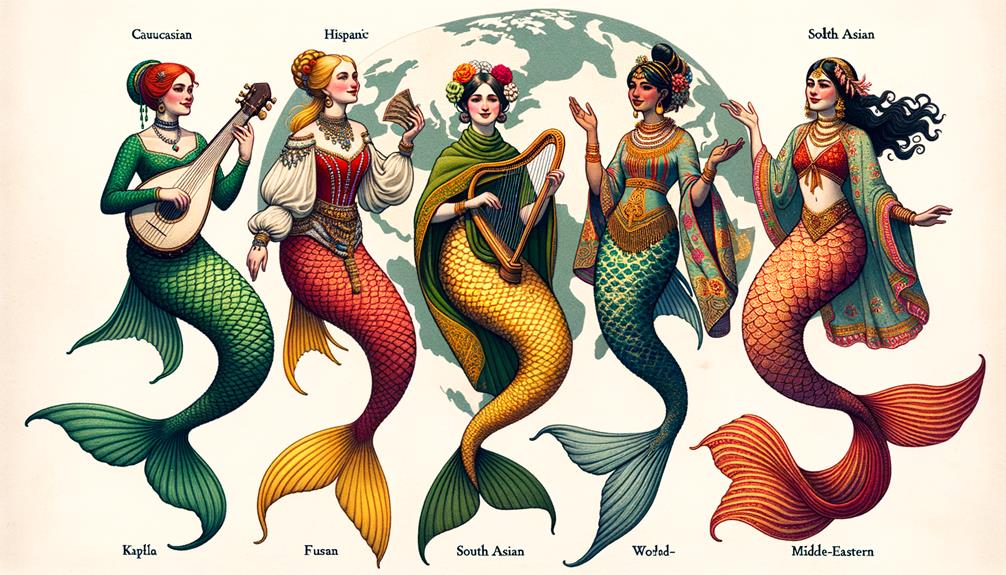
You'll find fascinating tales of mermaids scattered all over the world, each narrative tweaked to match the culture it originates from. For instance, there's the Mami Wata from Africa and the shape-shifting selkies from Scotland. The Greeks and Romans spun tales about Thessalonike and the Sirens, who were as enchanting as they were dangerous. On the other hand, Scottish tales tell of selkies who could change from seals to humans.
Over in Southeast Asia, you'll hear about Suvannamaccha, a mermaid princess from the Ramayana epic. Eastern Europe, for its part, shares the narrative of the rusalka, a water nymph with an eerie presence. These stories, which span continents and centuries, show us how deeply ingrained the fascination with these mythical beings is in cultures worldwide. More so, they highlight the remarkable range in mermaid lore, underlining the depth and breadth of human creativity and faith.
Mermaid Symbolism and Significance
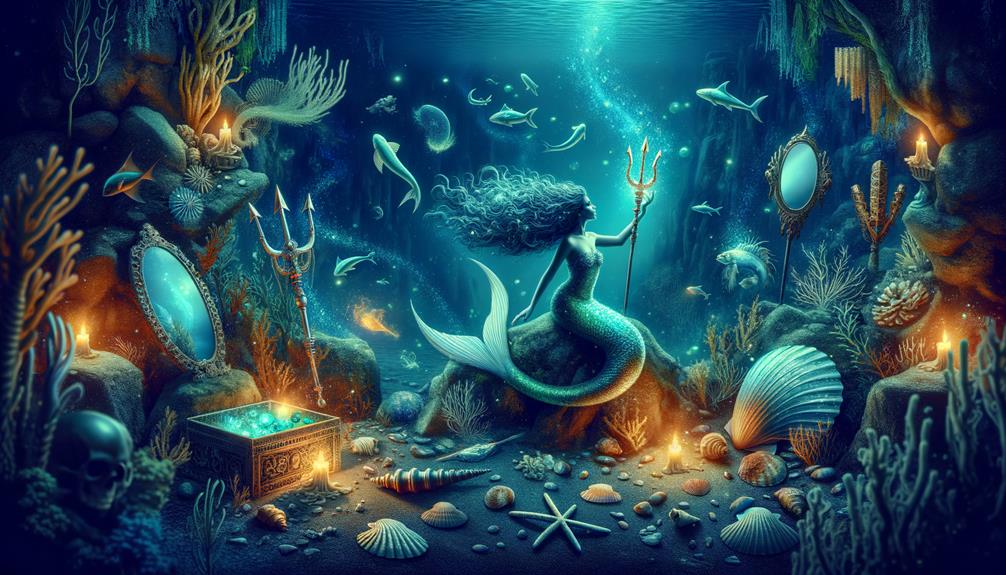
When we delve into the symbols and meanings of mermaids, it becomes apparent that these mythical beings often portray the relationship between our world and the ocean, serving as a link between life and mortality. They're an interesting mix of charm and danger, much like the sea itself. Mermaids are famous in myths for their seductive nature, their captivating melodies steering sailors to their untimely end.
- Symbolism: Mermaids embody the dual characteristics of the sea – its captivating charm and its perilous unknowns.
- Cultural Narratives: Across the globe, mermaids play different roles in folklore, their narratives differing with each culture.
- Maritime Legends: These characters are pivotal to seafaring legends, their stories reflecting the eternal connection between mankind and the ocean.
Mermaids in Contemporary Media
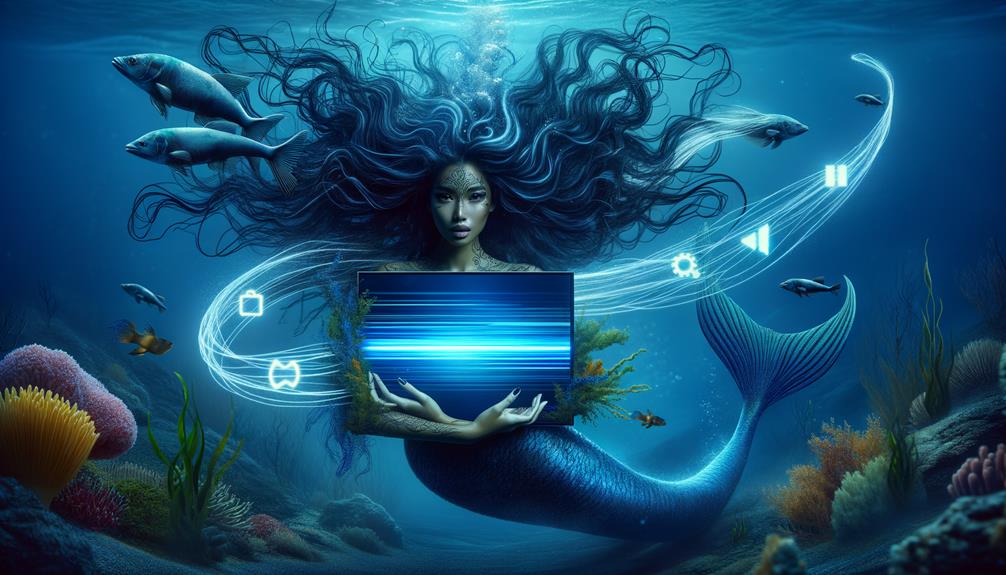
Let's dive into the modern media world, where we see an interesting shift in how mermaids are portrayed, focusing on empowerment, diversity, and inclusivity. Take Disney's The Little Mermaid for instance. Ariel's brave and determined character flips the script on traditional mermaid stories, showing them as strong figures with their own unique skills and hurdles. Then there's Siren, where mermaids are depicted as powerful and enigmatic, breaking usual stereotypes.
Mermaid presence is also amplified on social media platforms, creating a space for communities that appreciate mermaid cosplay, fan art, and subcultures. This sense of inclusion even extends to the fashion industry, with mermaids influencing trends that blend fantasy and reality. This modern media representation of mermaids breathes new life into the old mythology and resonates with today's values, making mermaids symbols of empowerment and diversity.
Frequently Asked Questions
Where Did Mermaids Originally Come From?
Isn't it intriguing to learn about the origins of mythical creatures like mermaids? They've been part of our collective imagination for millennia, and their origins are deeply rooted in ancient Middle Eastern mythologies. These captivating sea-dwellers first made their appearance in Mesopotamian art pieces. If we go back in time, it's astonishing to know that the earliest mentions of mermaids can be traced back to the late Palaeolithic era, which was roughly 30,000 years ago!
Does the Bible Say Anything About Mermaids?
Well, if you're wondering whether the Bible makes any references to mermaids, the answer is no. The Bible's narrative centers around actual events and moral teachings, rather than mythical beings. Although it does talk about creatures of the sea, there's no specific mention of mermaids.
What Is the Myth of the Mermaids?
The mermaid myth is an age-old tale that paints these creatures as half-human, half-fish entities who live in the watery depths. They're represented with different features in different cultures, but the common thread is their bewitching charm and often dangerous interactions with humans. This age-old tale has been passed down through generations, capturing the imaginations of people worldwide.
When Was the First Sighting of a Mermaid?
Did you know that the first ever recorded sighting of a mermaid dates back to 1493? This intriguing event took place during Christopher Columbus' voyage to the Caribbean. However, there's a twist to the tale: Columbus actually mistook manatees for these mythical sea dwellers.

